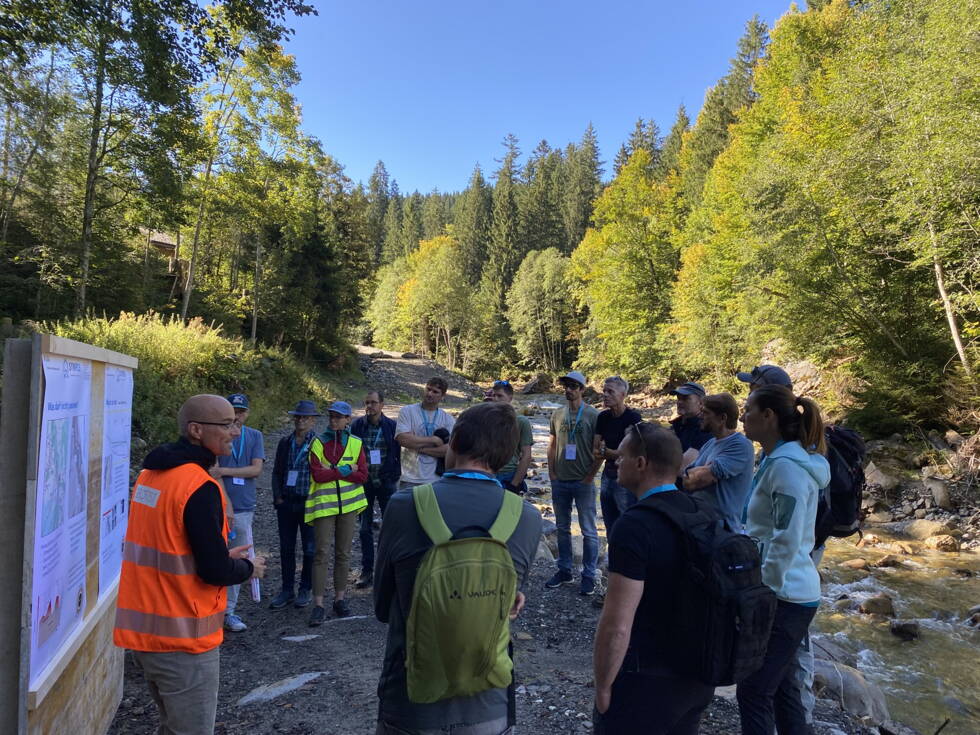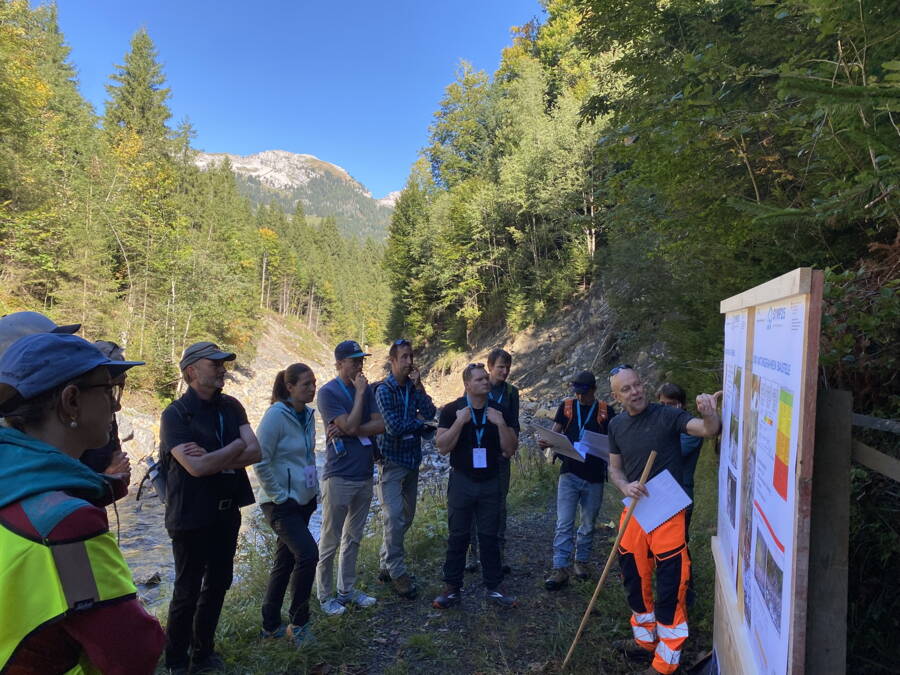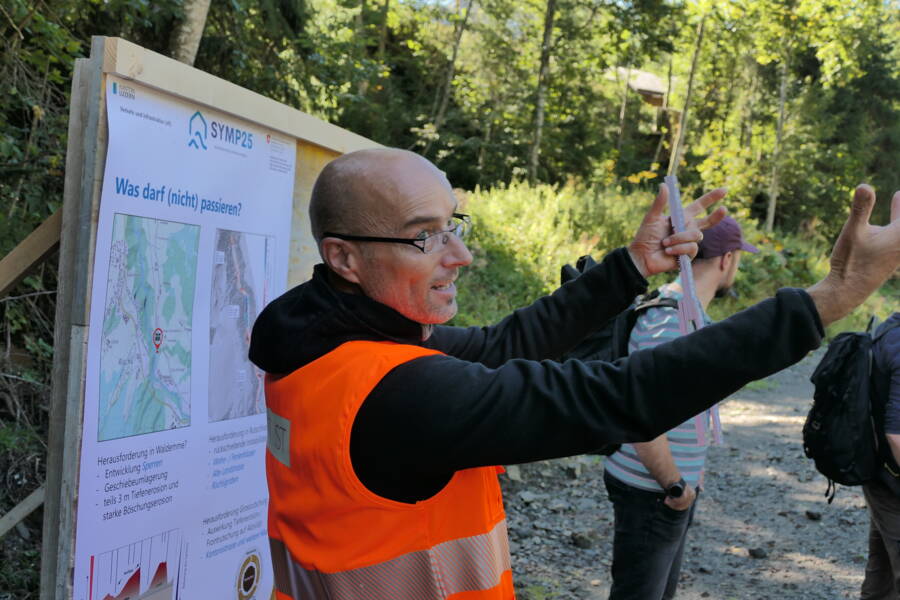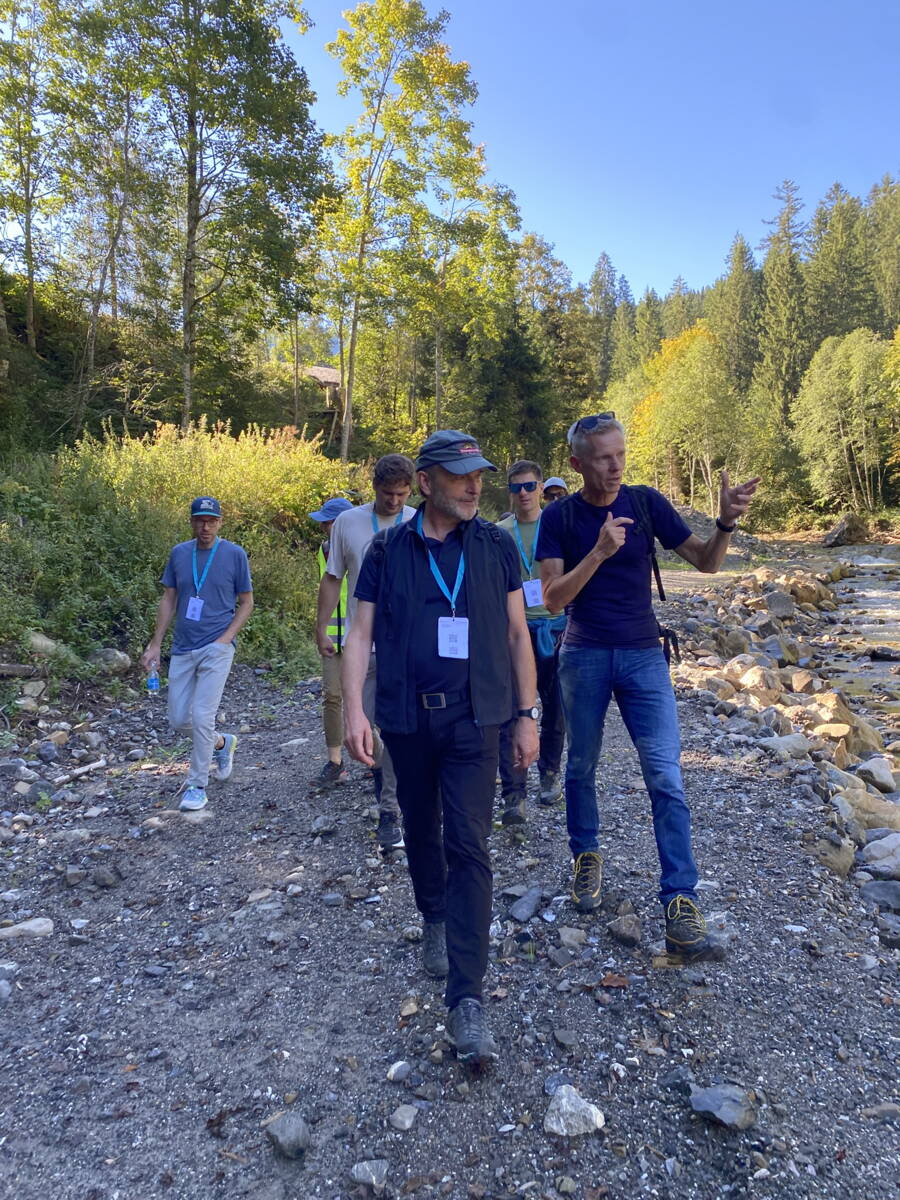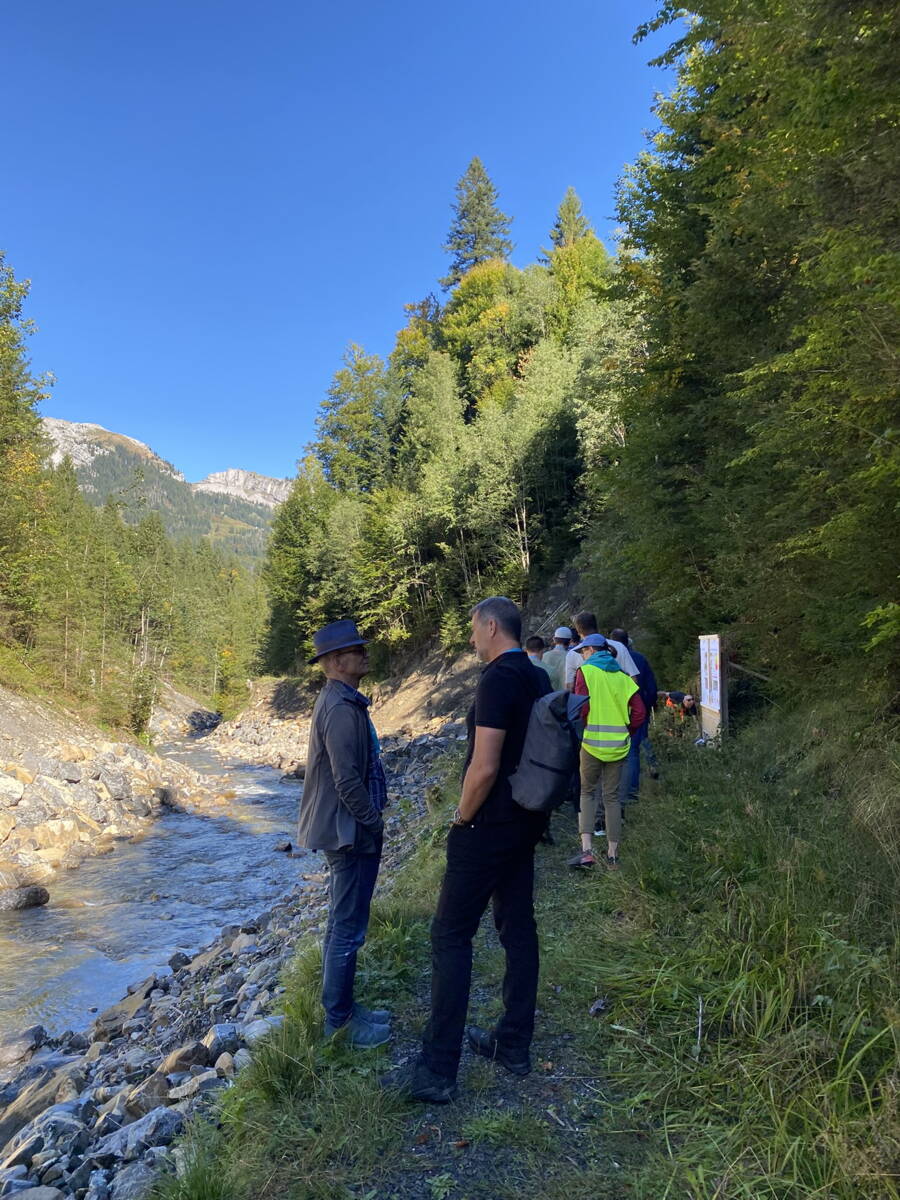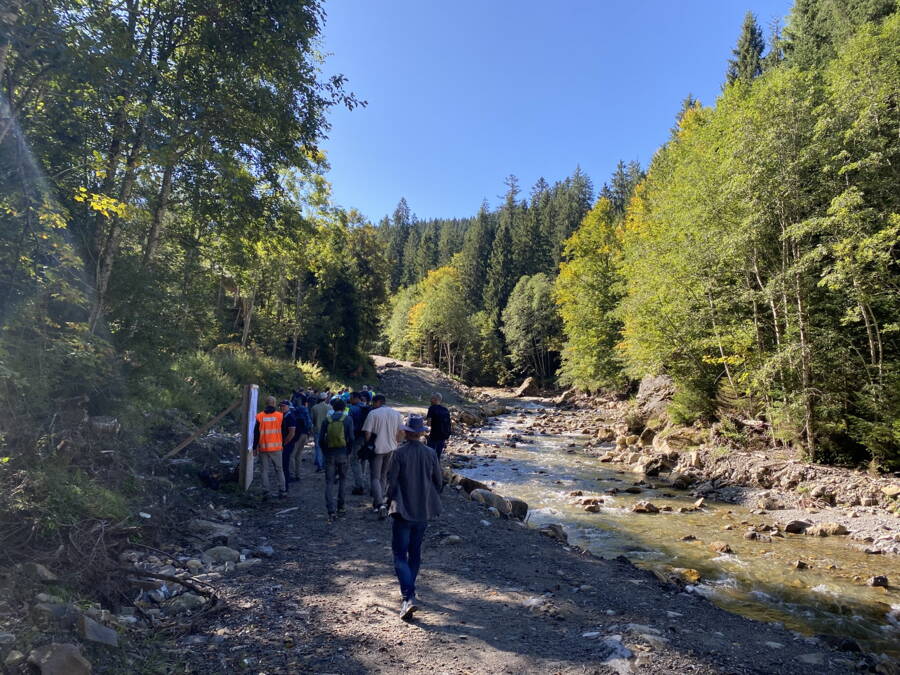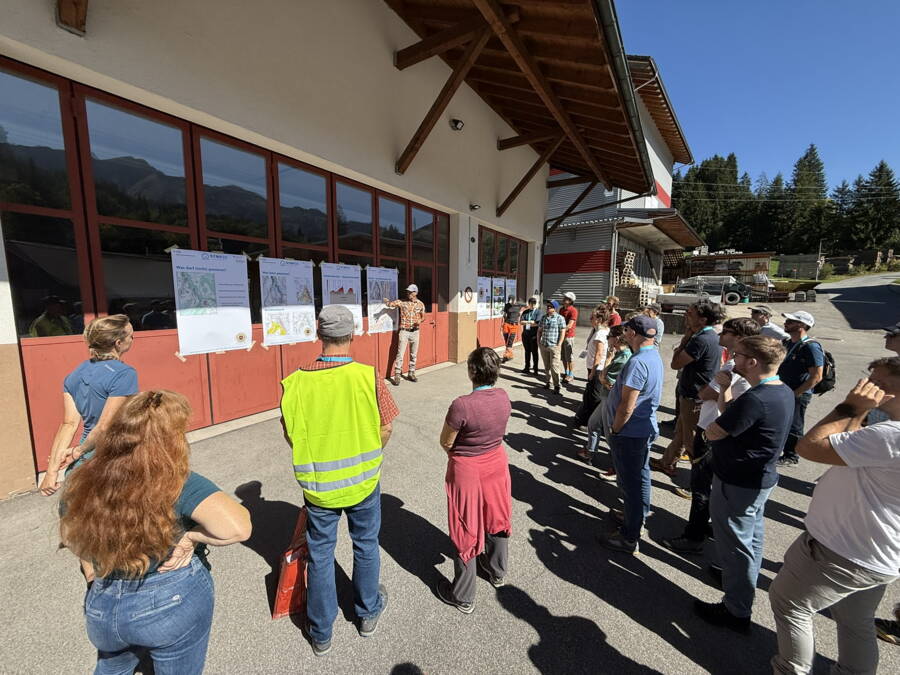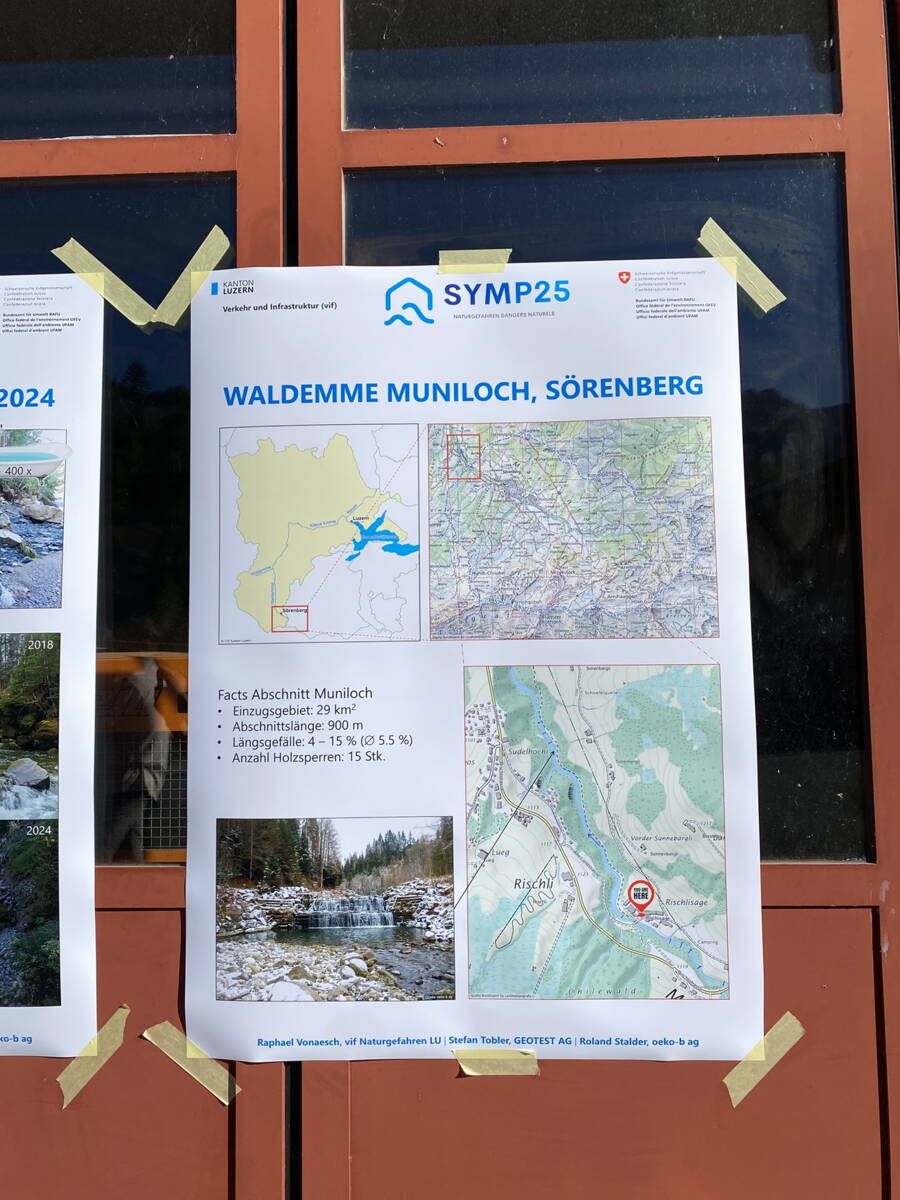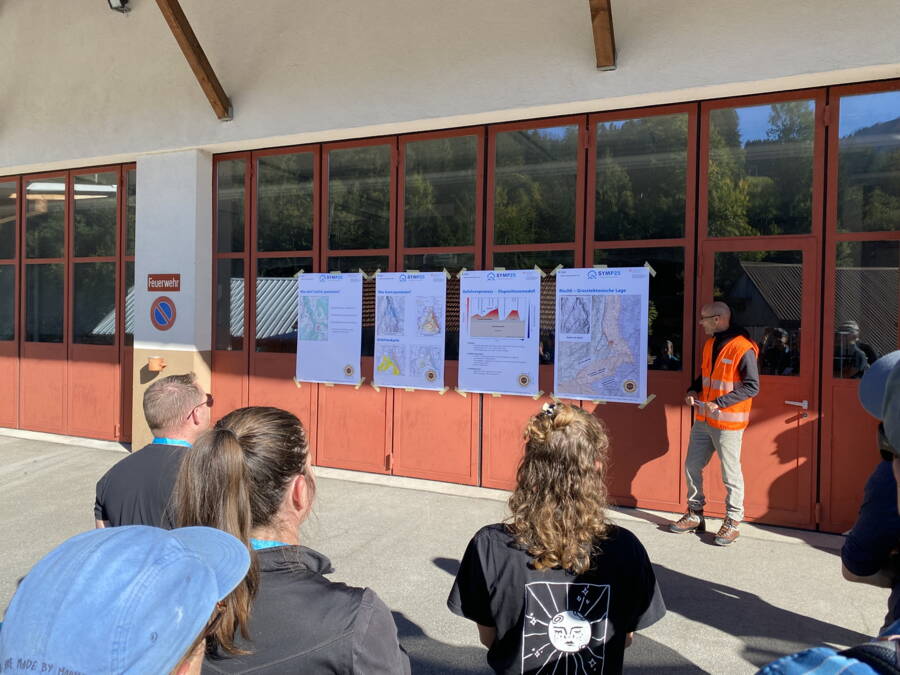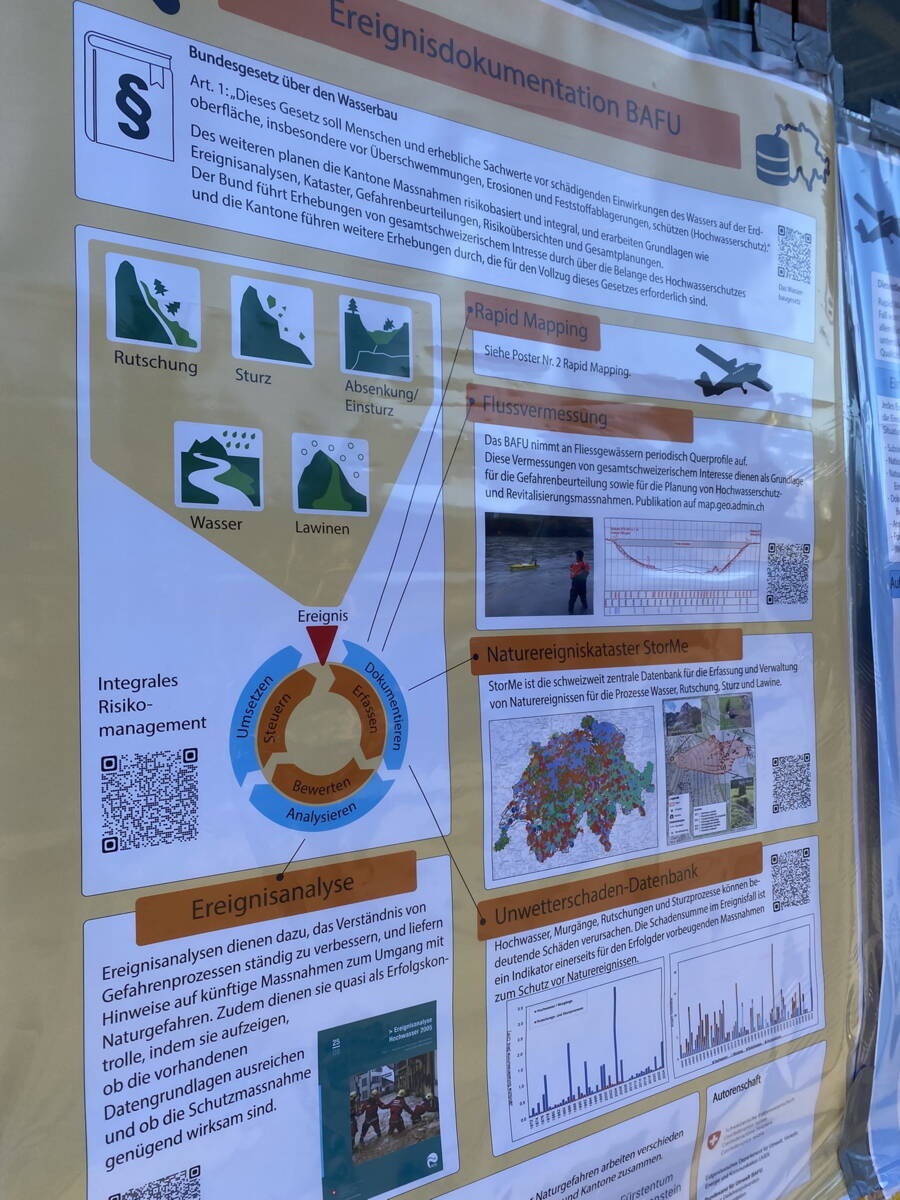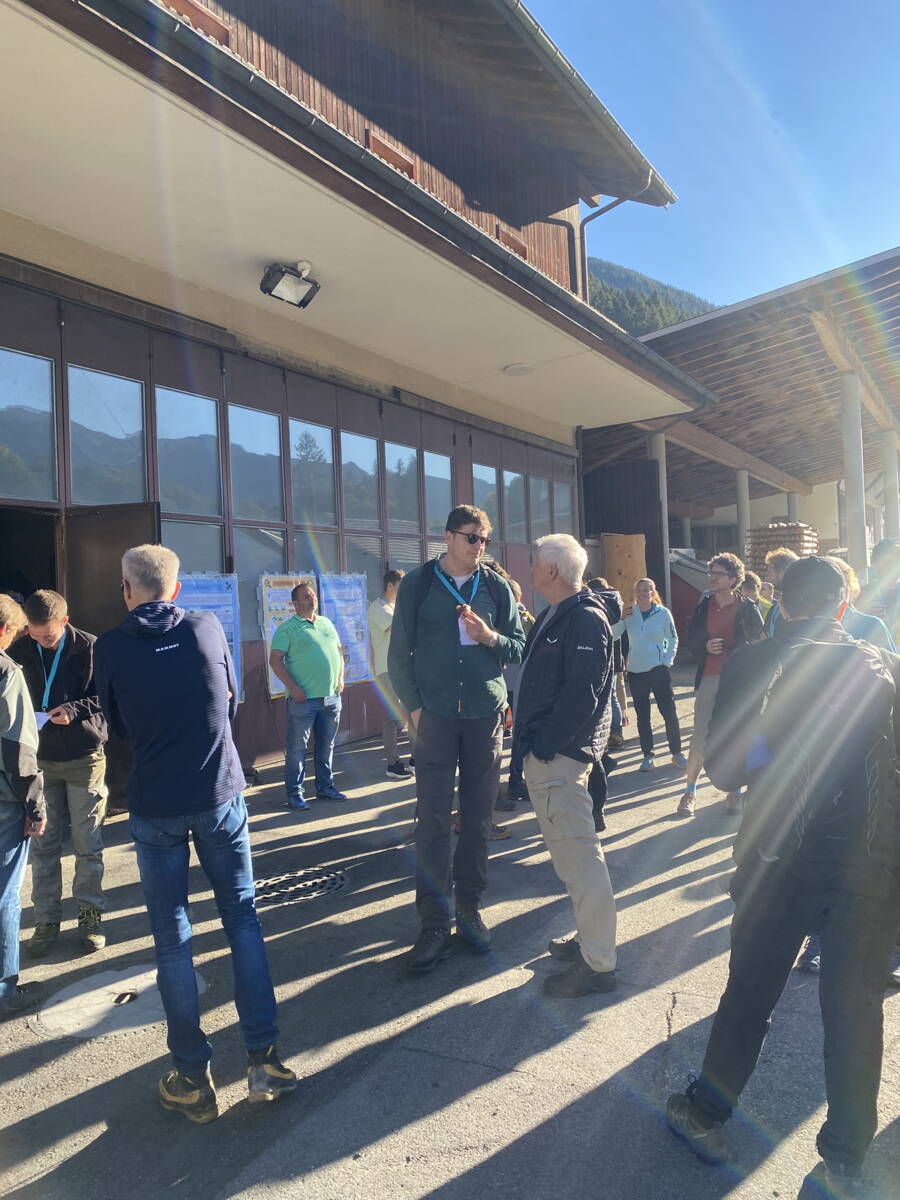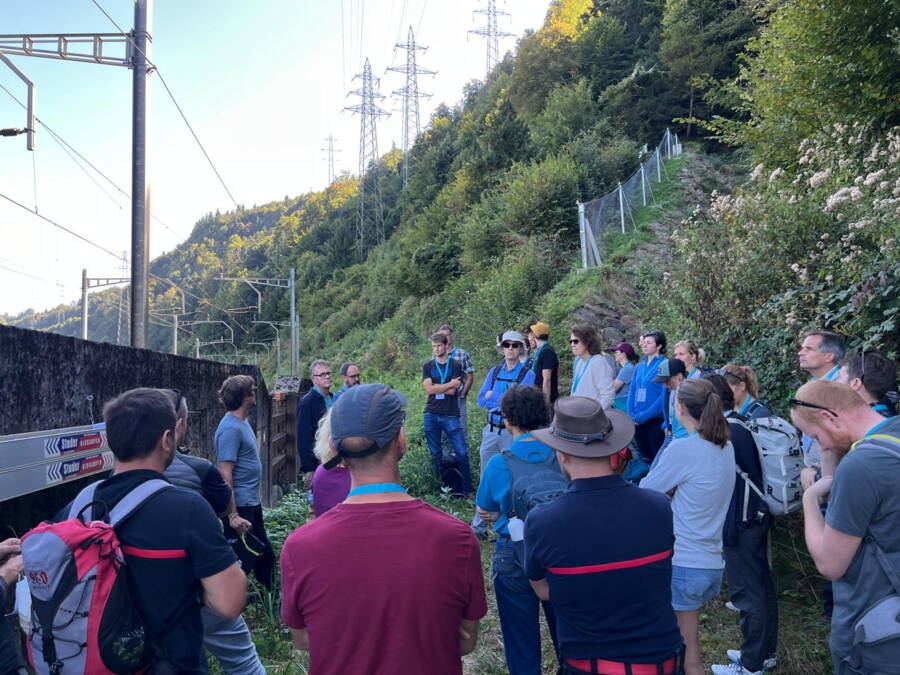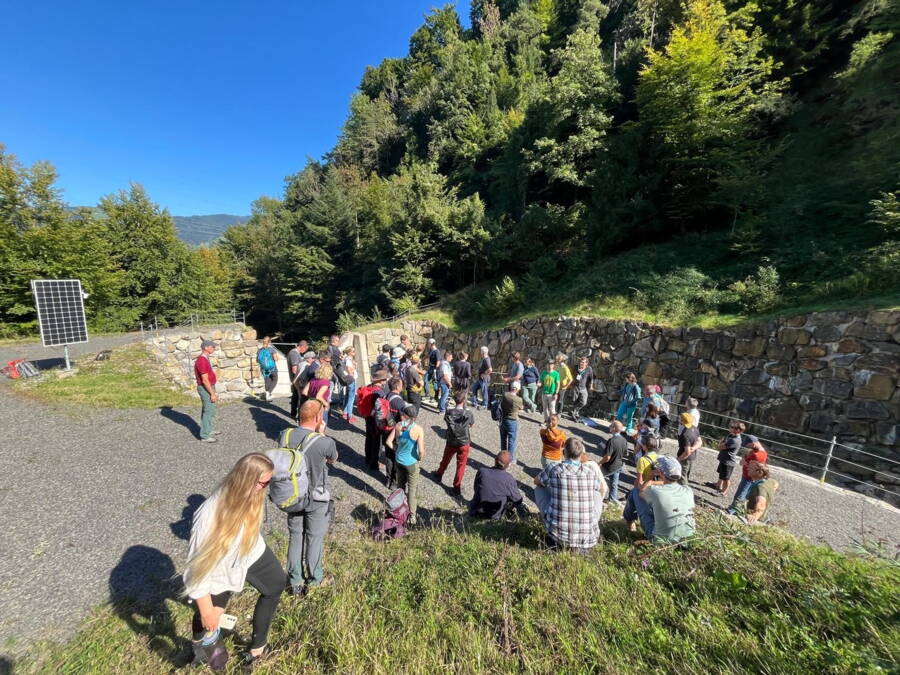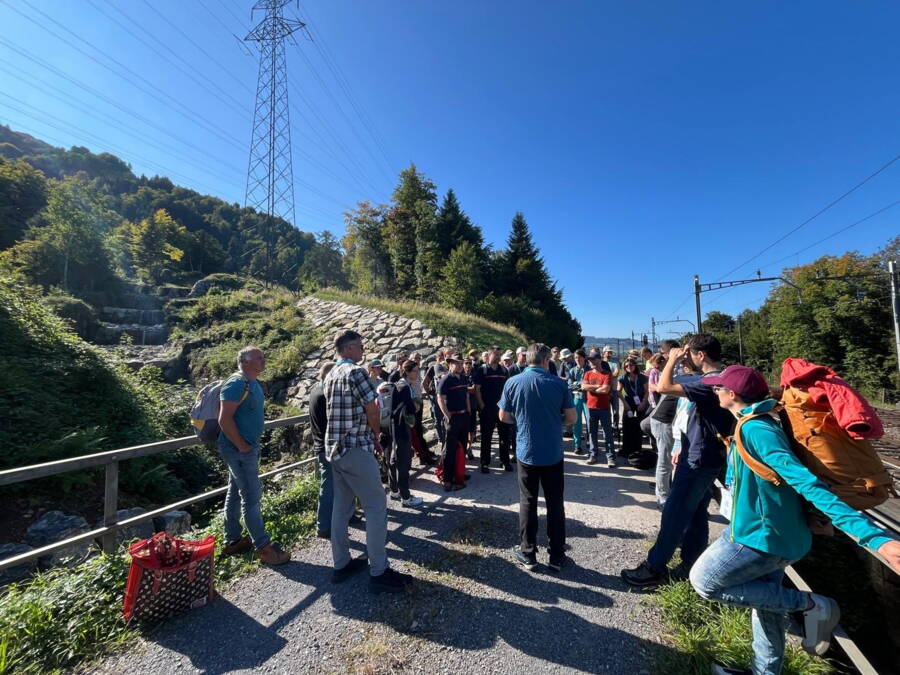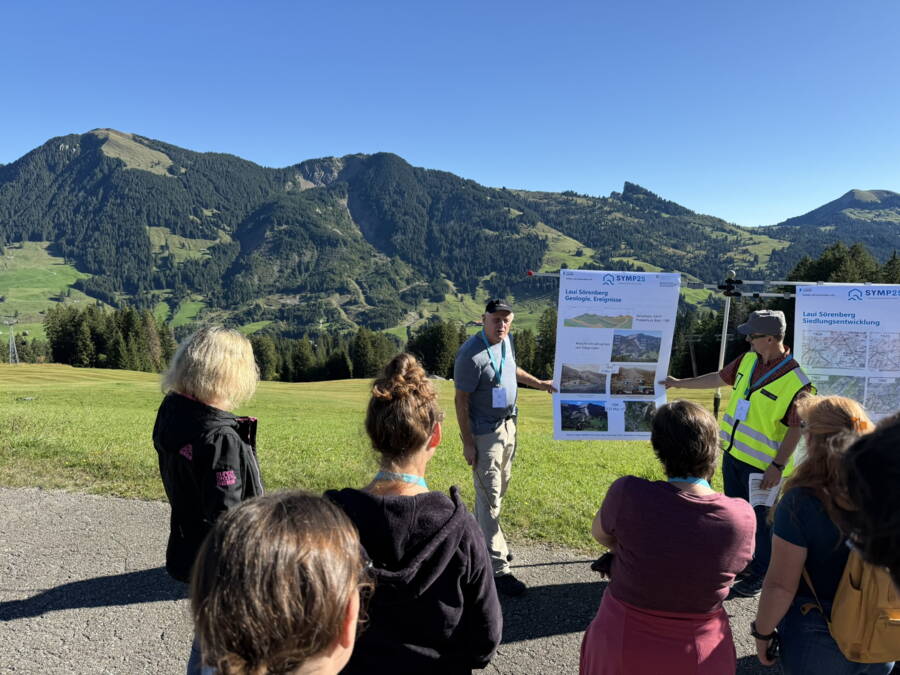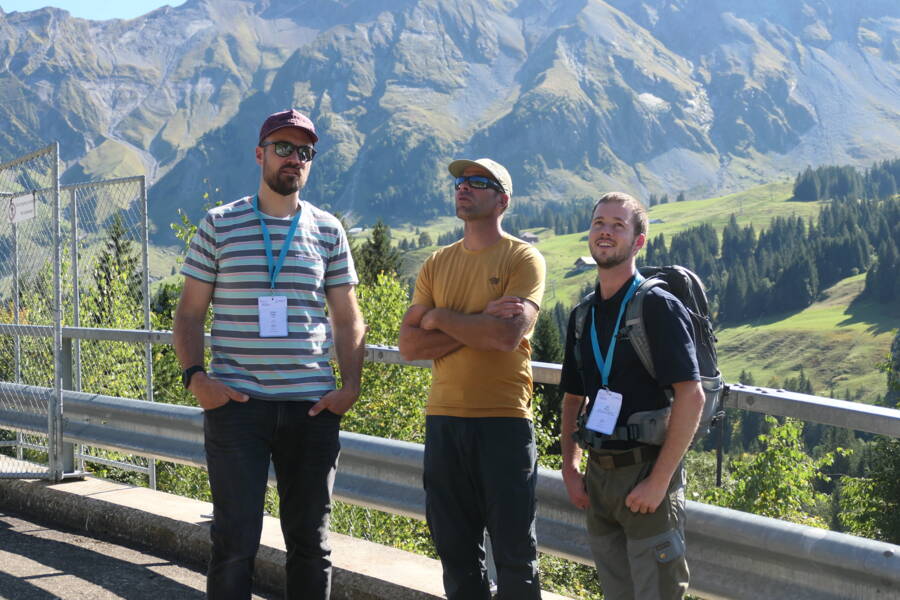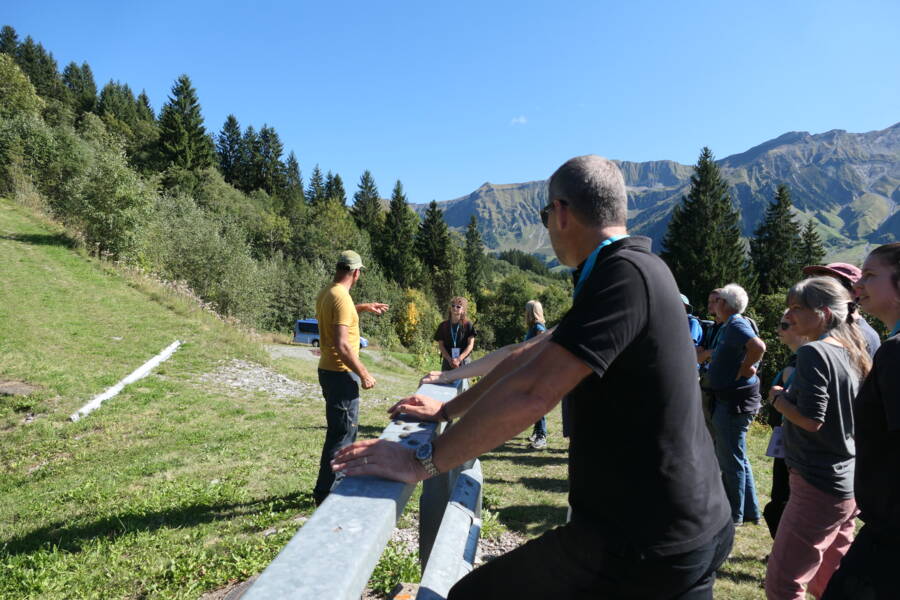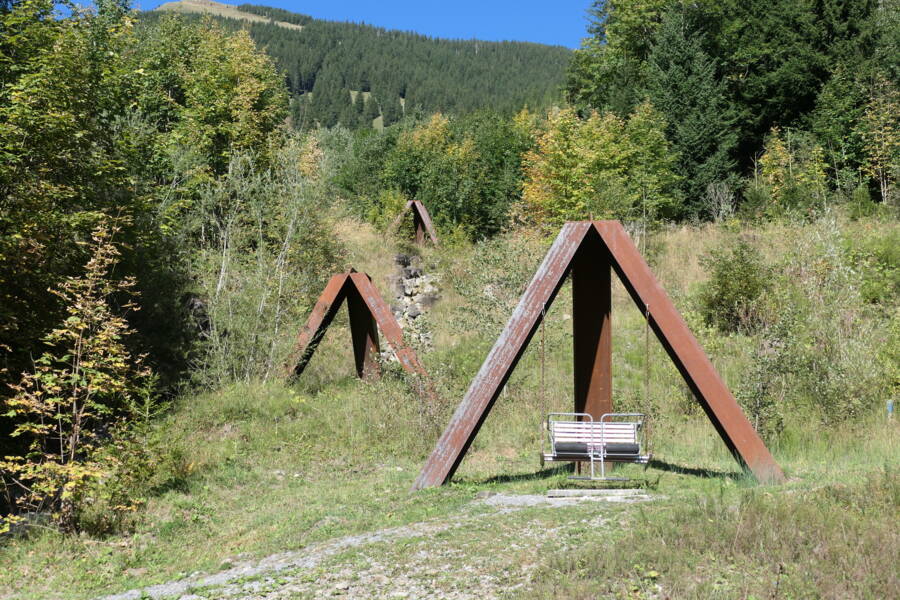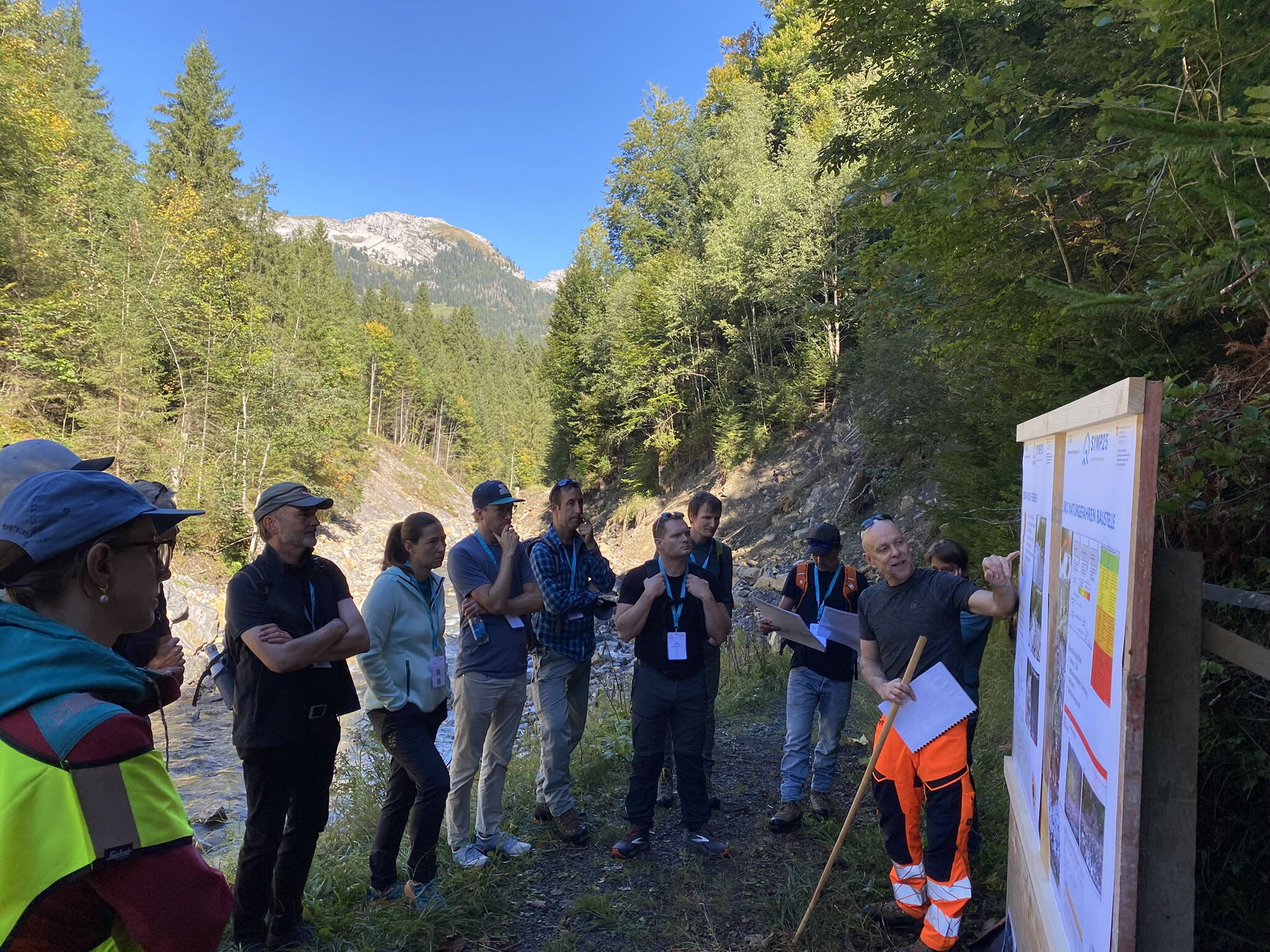Under the motto "Taking Responsibility Together," the event focused on interdisciplinary exchange, the transfer of knowledge between research and practice, and the further development of Integral Risk Management (IRM). While the first day at the KKL Lucerne was characterized by expert presentations, panel discussions, and exhibitions, the focus on the second day was on practical on-site insights.
Protection of Settlement Areas in Sörenberg
In Sörenberg, the focus was on maintaining and adapting existing protection systems in light of changing climatic conditions. Topics covered included:
Managing aging or damaged protective structures: prioritizing maintenance and renewal based on concrete examples at the Waldemme and its tributaries,
Event documentation as part of Integral Risk Management (IRM),
Large landslides and their interaction with water bodies, including spatial planning, monitoring, emergency planning, and protection systems using the example of the Laui area.
The excursion was accompanied by high-ranking representatives from the Federal Office for the Environment (FOEN), including Paul Steffen (Deputy Director), Josef Eberli (Head of the Hazard Prevention Department), and Adrian Schertenleib (future Department Head) – further emphasizing the great importance of the event.
Integral Protective Structure Concept of the SBB
Another excursion led to the Zugersee West / Rigi northern slope area, where we explored the SBB’s integral protective structure concept: from rockfall protection and debris collectors to early warning systems – an impressive example of applied risk management in the infrastructure sector.
Protection against natural hazards can only succeed together, through consistently applied Integral Risk Management – and with the courage to pursue new approaches.
A Strong Signal for Collaboration in Natural Hazard Management
The symposium offered professionals from administration, science, engineering, insurance, and planning a valuable platform for networking, exchange, and joint assessment. Once again, it became clear: protection against natural hazards can only succeed together, through consistently applied Integral Risk Management – and with the courage to pursue new approaches.
We thank everyone for this successful event and look forward to continuing to contribute to sustainable hazard prevention.

